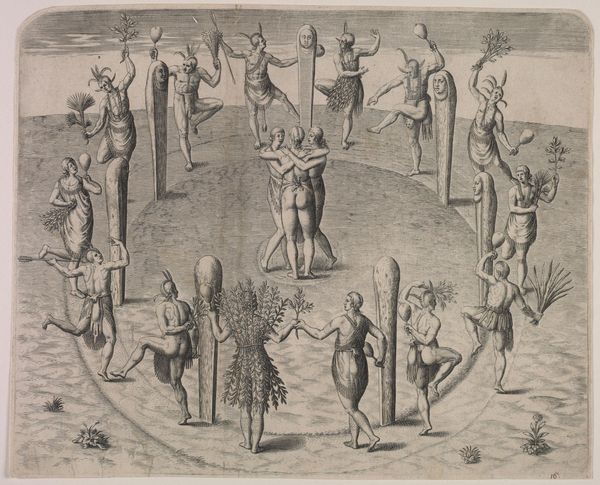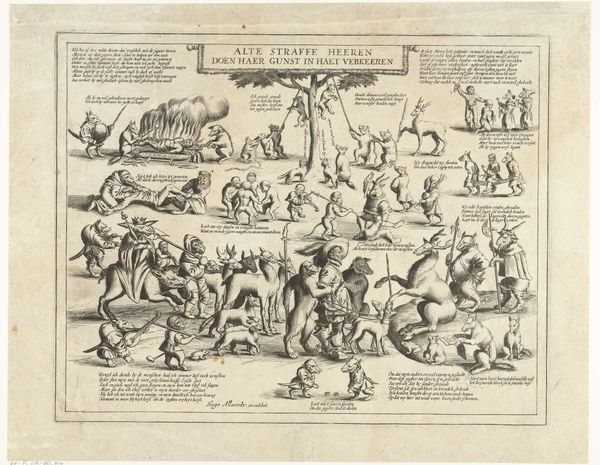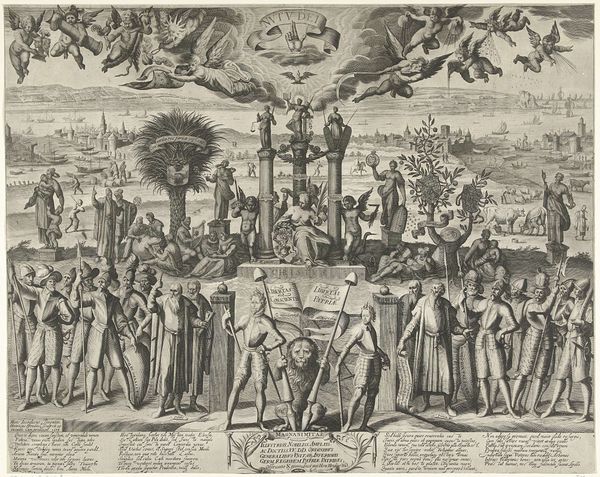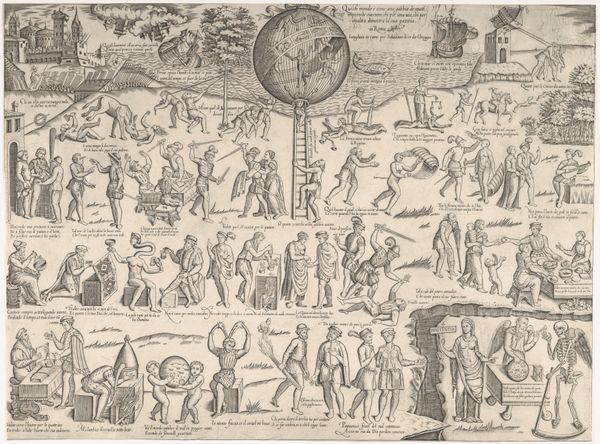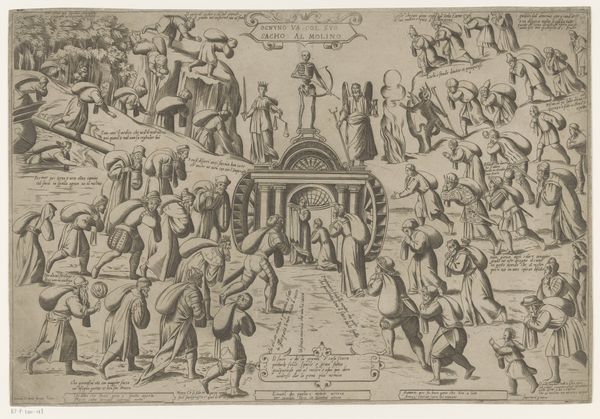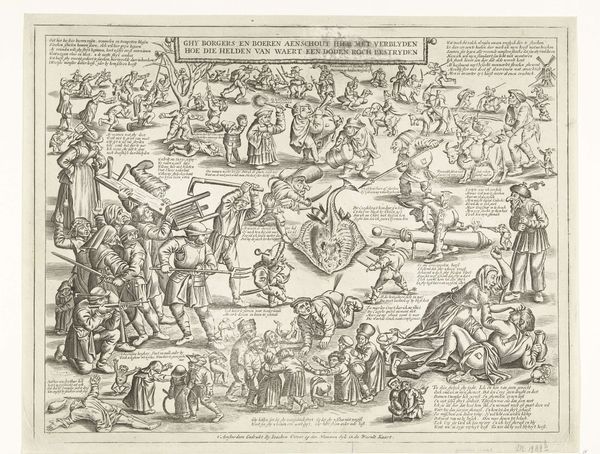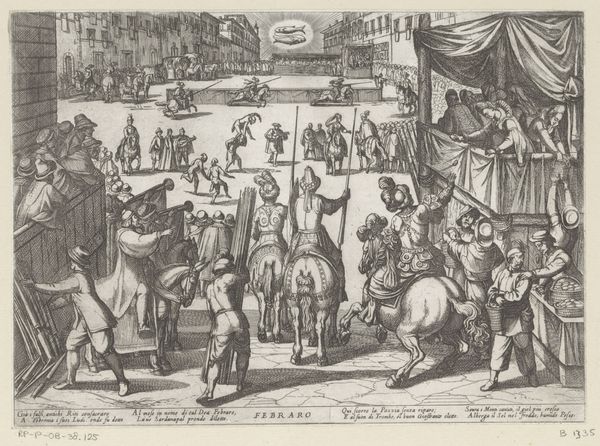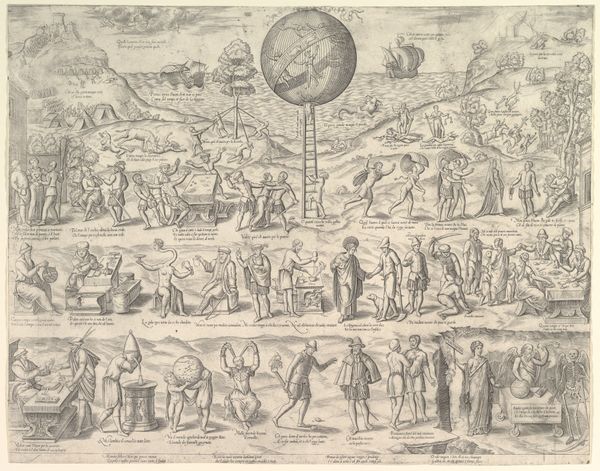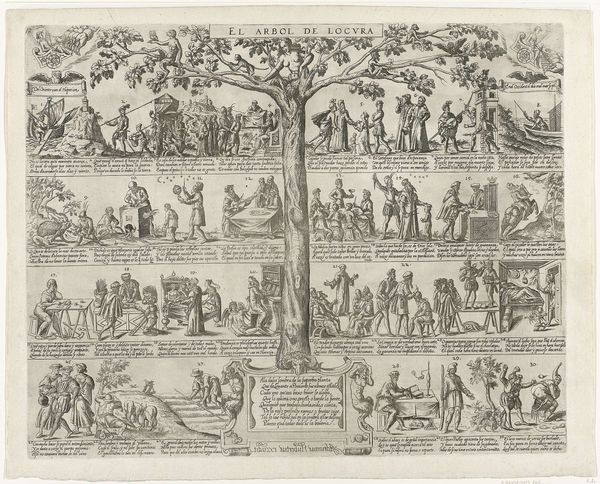
print, engraving
#
medieval
#
narrative-art
#
pen drawing
# print
#
mannerism
#
figuration
#
line
#
genre-painting
#
history-painting
#
engraving
Dimensions: height 321 mm, width 524 mm
Copyright: Rijks Museum: Open Domain
Curator: This is Frans Hogenberg's "Narrendans," created sometime between 1560 and 1570. The piece, held at the Rijksmuseum, is an engraving, showcasing a dance of fools. What strikes you first about it? Editor: The chaotic energy! Despite the linear precision of the engraving technique, there's a distinct sense of frenzied movement, almost manic, in the composition. Curator: Absolutely. The 'dance of fools' motif was prevalent in the 16th century, serving as a critical lens on societal follies. Each figure represents a specific type of fool, caught up in a circular, seemingly endless dance. It’s about the pervasiveness of folly. Editor: Notice how Hogenberg employs line? It's not just descriptive; the varying weights and densities of the lines create depth and texture. And that ring of dancers – their interlocking hands emphasize the cyclical, inescapable nature of their "folly." Curator: Precisely. Moreover, each character is labeled: consider, for example, "Adulator," and so forth. These serve almost as moral or satirical commentaries of the era. The image becomes a textual and visual catalogue of social behaviors condemned at the time. The expressions too, from vacant to manic, betray inner turmoil. Editor: True, and there are the observers looking on in the upper corners, almost as though trapped above the dance, and reduced to observers. Are they meant to be the wise, the reasonable who cannot escape watching madness unfurl? Curator: One might assume so. The gaze is always powerful, determining who has power, in who is excluded. Given the Reformation, and its critiques against certain church practices, one also has to consider the role that faith, governance and structures play here. Are they as ‘mad’ as the dancers? Editor: So, looking closer—past the subject matter—it's how Hogenberg used linearity to underscore a larger theme of relentless folly. Curator: I would add that this linearity and cyclical madness reflect also socio-political upheavals embedded in that time. It goes far beyond surface meaning. Editor: It’s made me realize how powerful the interplay between form and concept can be—how an engraving of dancing figures can speak volumes about human nature and structure. Curator: Indeed. Let’s hope that now as then, this does function as cautionary statement about repeating the follies of the past.
Comments
No comments
Be the first to comment and join the conversation on the ultimate creative platform.
